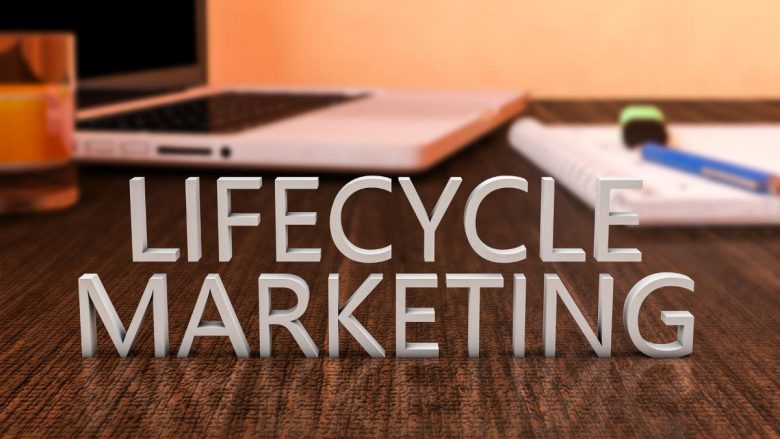
The stages that a customer goes through when considering, purchasing, and using a product or service are referred to as lifecycle marketing.
Any campaign that promotes a company’s products and services across multiple channels is referred to as lifecycle marketing. Emails and social media, blogs, and even billboards are examples.
A customer’s lifecycle is divided into stages
- Customer awareness: When a customer recognizes a need or desire, they begin looking for solutions.
- Customer Interest: The customer starts to narrow down their options and expresses an interest in certain products or services.
- Consideration: The customer weighs the benefits and drawbacks of various products or services.
- Purchase: The customer makes a purchase decision and purchases a product or service.
- Usage/Engagement: The customer uses the product or service and may provide feedback about their experience. It could also be the point at which the customer decides to become a brand ambassador.
All of these stages are considered in lifecycle marketing, and different tactics are used to reach customers at each stage. Advertising, for example, maybe more effective at raising awareness, whereas product demonstrations may be more effective at getting customers to consider your product. It’s critical to understand your target market and the types of marketing that will appeal to them.
Businesses benefit from lifecycle marketing because it allows them to track their customers’ progress and adjust their marketing strategy accordingly. It also enables businesses to gain a better understanding of their customers’ needs and preferences, allowing them to improve their products and services. Finally, lifecycle marketing aids businesses in obtaining a higher return on investment (ROI) from their marketing activities.
What is lifecycle marketing, exactly? In a nutshell, it’s a marketing strategy that takes into account the various stages a customer goes through when considering, purchasing, and using a product or service.
Each stage necessitates different marketing strategies, so knowing your target audience and what types of marketing will appeal to them is critical. Lifecycle marketing can help businesses get a better return on investment from their marketing efforts, so it’s something to think about for your company. Professional marketers, such as Mediagroup Worldwide, will incorporate lifecycle marketing strategies into your company’s overall marketing strategy.
How do you put a lifecycle marketing strategy into action?
When developing a lifecycle marketing strategy, the following three steps are typically followed:
- Triggers
- Messages
- Channel
1. Triggers
You’ll need a tailored strategy for each stage of your customer’s life to get the most out of your marketing budget. This entails understanding where they are on their journey with us and what messages will resonate most effectively at those points.
Triggers are pre-defined conditions that determine how frequently customers see specific types or styles of information-related products/services offered by companies like yours. These triggers determine whether or not an advertisement should appear when a user conducts an online search (a Trigger condition).
Based on every type of online action a user takes, you can pre-determine what such triggers must be.
2. Messages
Customers must receive a message that is related to the trigger. Customers don’t just want to hear from you; they want to know why you’re doing it. Sending personalized, relevant emails to your customer experience team members and addressing their specific interests or needs is one of the best ways to ensure they open every message sent out. If someone abandoned at the consideration stage, for example, this could be addressed with an email reminding them of how much money was still left on the account, which could be patiently withdrawn before being completely withdrawn.
3. Channel
The medium or platform through which the message is sent is referred to as the channel. Email, live chat on your website, social media, or video streaming platforms like YouTube or TikTok are just a few examples.
Marketing strategies for the entire lifecycle
You can start developing marketing tactics that will resonate with your customers at each stage once you have a solid understanding of their lifecycle stages. To get you started, consider the following suggestions:
- Consider using content marketing to introduce your product or service to customers who are just learning about it. This could take the form of blog posts, e-books, case studies, or infographics that explain what you do and how it can help them.
- Use targeted ads or email campaigns to persuade customers to buy from you once they’ve reached the consideration stage. You can also provide them with free trials or demos to help them evaluate your product.
- The goal of the purchase stage is to make the buying process as simple and painless as possible. Offering discounts or coupons, free shipping, or a money-back guarantee are all examples of this.
Finally, follow up with customers after they’ve made a purchase to make sure they’re happy with it. You can also offer them complementary products or services to what they’ve already purchased.
You can create a lifecycle marketing strategy that will help you attract and retain more customers if you follow these guidelines.
Learn more from Marketing and read How to Build a Successful Marketing Campaign.



One Comment